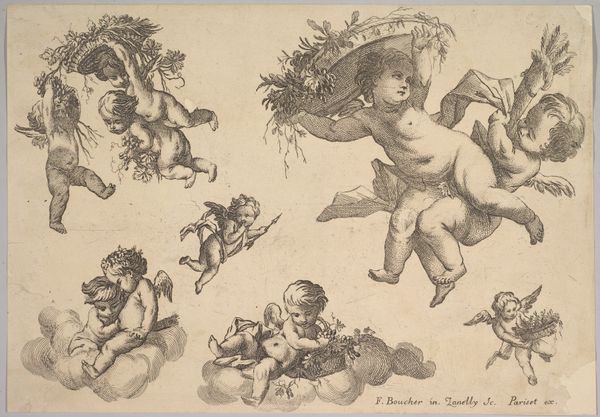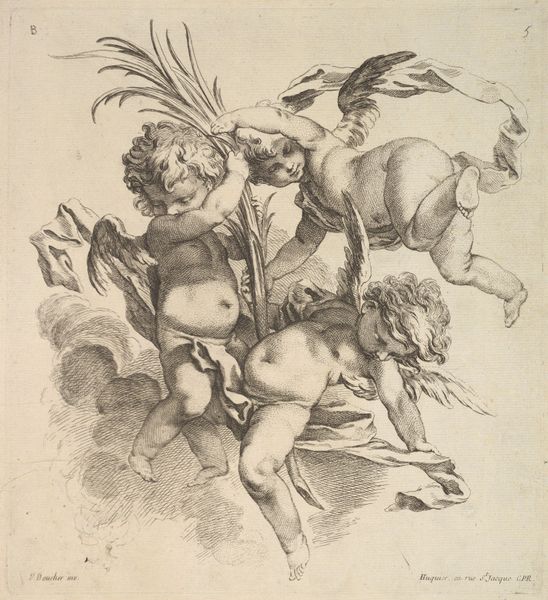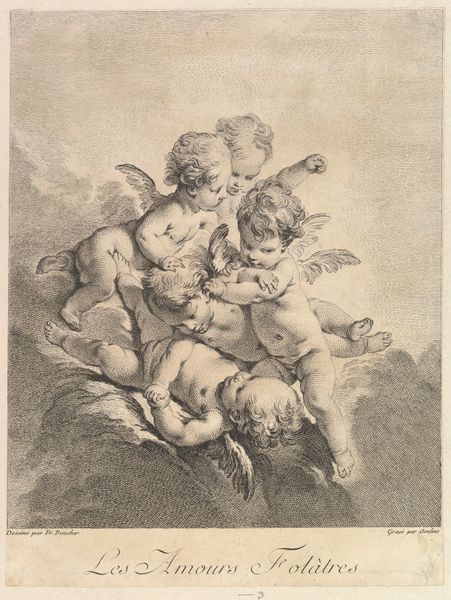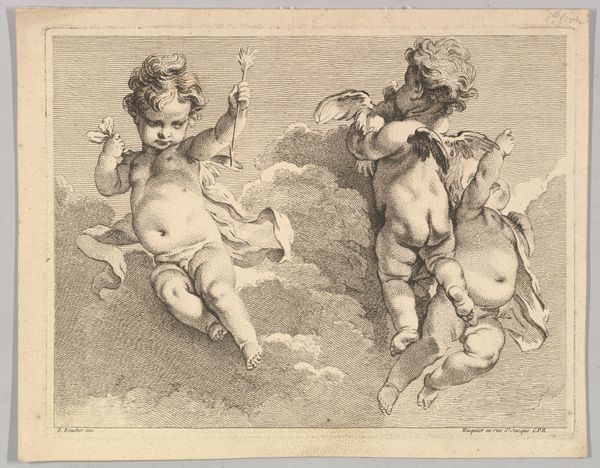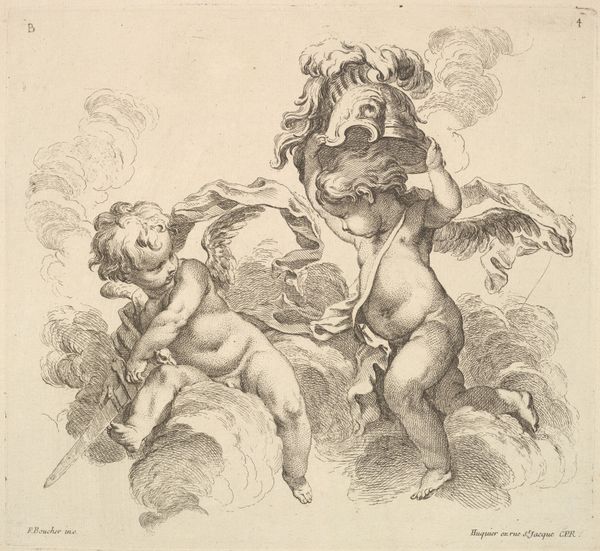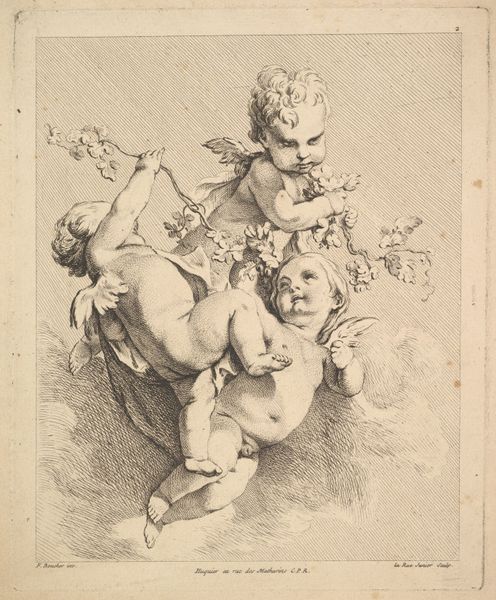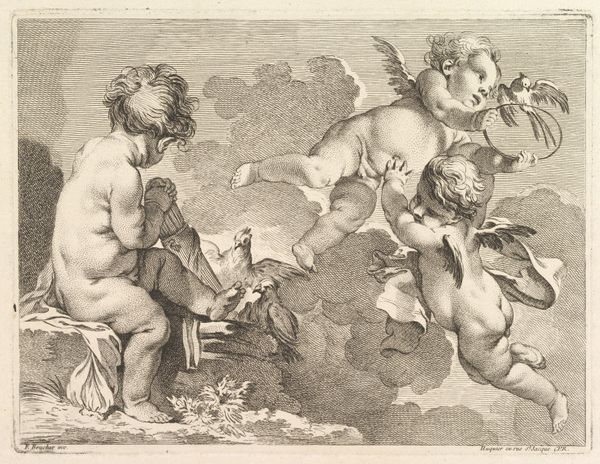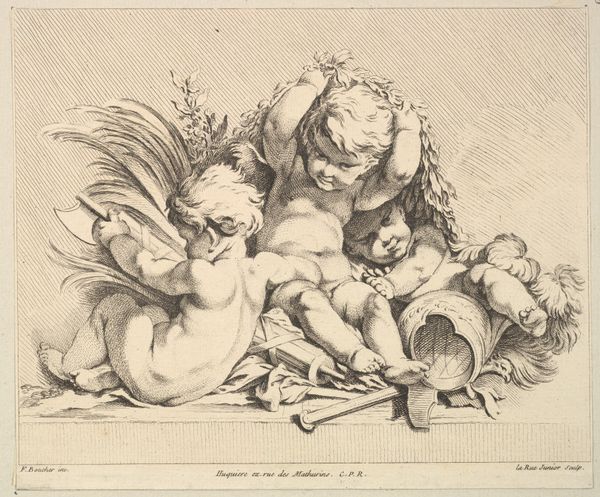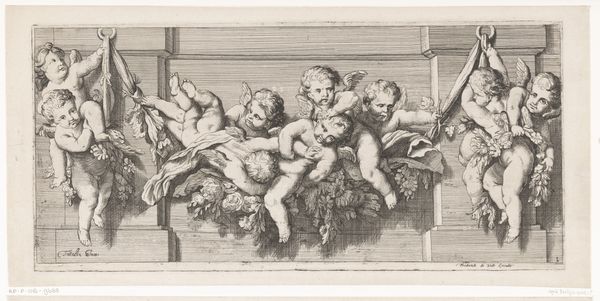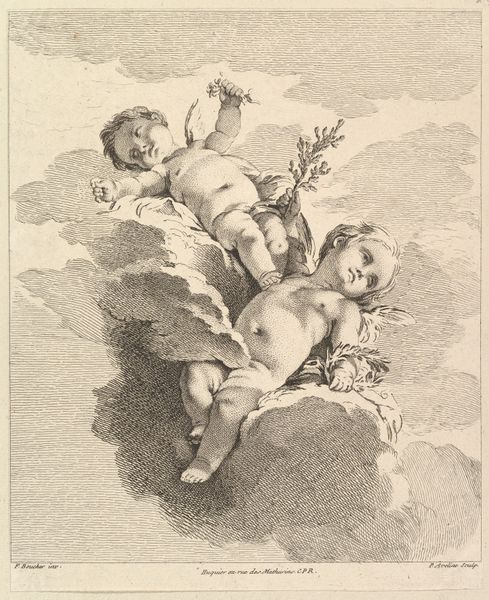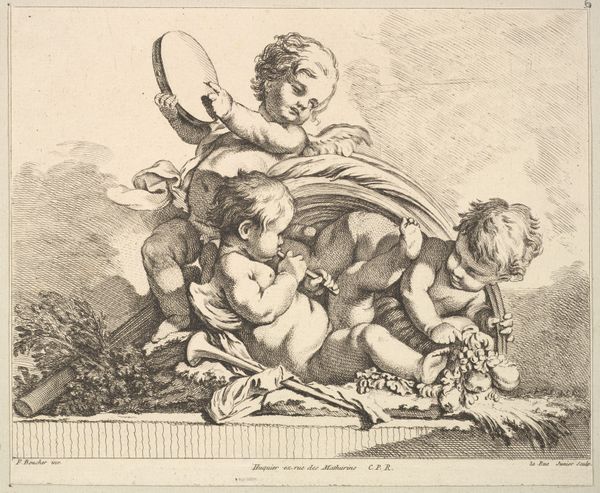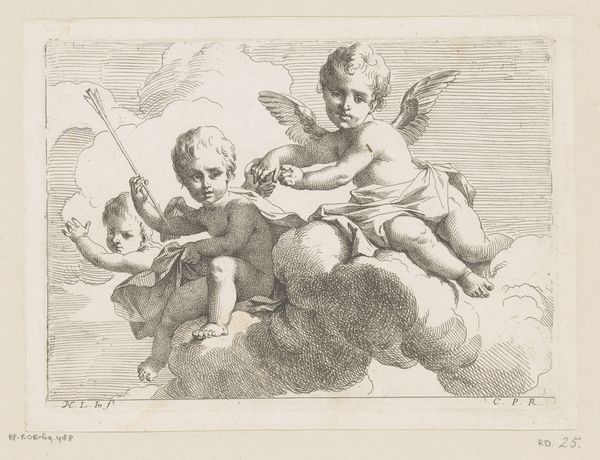
Three Loves, One holding a Quiver, the Other, Grapes 1727 - 1760
0:00
0:00
drawing, print, engraving
#
drawing
#
allegory
#
baroque
# print
#
figuration
#
history-painting
#
engraving
Dimensions: Sheet: 11 9/16 x 15 9/16 in. (29.4 x 39.5 cm) Plate: 8 1/2 x 11 in. (21.6 x 28 cm)
Copyright: Public Domain
Editor: So, this is "Three Loves, One holding a Quiver, the Other, Grapes," an engraving by Pierre Alexandre Aveline, sometime between 1727 and 1760. There's a definite sweetness to it, but also something slightly unsettling about the cherubs posed in this way. What do you see in this piece? Curator: It's a potent example of Baroque allegory, isn't it? We see these figures of love, embodiments of desire and abundance, within the context of burgeoning aristocratic excess and shifting power dynamics. The grapes, obviously linked to Bacchus and sensual indulgence, stand in contrast to the quiver, a symbol of Cupid's sometimes violent, destabilizing passions. Consider how this iconography reinforces and perhaps subtly critiques the ruling class’s relationship with pleasure and control. Editor: Critiques? How so? Curator: Well, aren't these figures presented as both innocent and yet somehow knowing? This tension mirrors the era’s anxieties about the potential for unchecked desire to disrupt social order. The historical context is important. Louis XV's reign saw both opulent displays and increasing social unrest. Does the artist present unbridled sensuality here, or is there a coded message about power, privilege, and their precariousness? Editor: That's a very different reading than what I initially perceived, simply looking at the adorable cherubs. The quiver suggests an attempt to dominate desire. Curator: Precisely. Think about the concept of love being held and directed, much like power and influence were managed – or, attempted to be – within the rigid social hierarchies of the time. How does the artistic representation both uphold and perhaps subvert these structures? Editor: It's fascinating to consider art as a commentary on social and political dynamics, more than just an aesthetic experience. Curator: Indeed. These visual allegories allow us to decode the values and anxieties of past societies. Now, what critical questions does this raise for you?
Comments
No comments
Be the first to comment and join the conversation on the ultimate creative platform.
